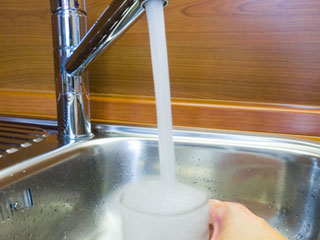
Limerick has been chosen as the test site by Irish Water to use a chemical called Orthophosphate which is hoped will reduce the amount of lead leaking into the city’s drinking water supplies. While the Environmental Protection Agency (EPA) recommends lead in the water should be combated by replacing the lead piping, it has acknowledged adding Orthophosphate to the supply could be a temporary solution. A safer solution is to add a filtration system to remove lead and other metals from drinking water. Limerick was chosen because it is on the Shannon estuary and not near fresh water bodies. The chemical Orthophosphate is classified as a phosphate (as in fertilisers) and can cause blue-green algae blooms in fresh water, a phenomenon that is already occurring on Lough Derg due to the over-use of fertilisers and subsequent run-off from farm land. Blue-green algae blooms in fresh water can produce potentially toxic cyanobacteria, which is a threat to human health. Pets and wildlife can die as a result of drinking water contaminated with cyanobacteria from algae blooms. In humans, contaminated water can cause acute stomach illness and skin rashes. With algae growth only set to rise, thanks in part to global climate change and the over-use of fertilisers in farming, the impact of its growth on human drinking water is a growing concern. Because Limerick is on an estuary, Irish Water say it is safe to add it to the city water supply…Read More (PDF)






